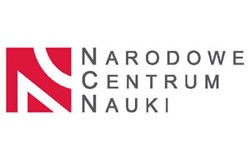
 |
National Science Centre (NCN) supports fundamental research by funding research projects carried out by individual researchers and research teams, both on the domestic and international level, as well as doctoral fellowships and post-doctoral internships. |
|
NCN announces calls for proposals four times a year. The NCN grantee must be employed at a Polish host institution
On May 2018, National Science Centre (NCN) has approved and subsidized project at IPPT PAN:
Investigation of the influence of strain rate on elastic-plastic properties of Gum Metal under quasi-static and dynamic loadings using field optical methods (Opus 14)
Principal investigator of the project is Elżbieta Pieczyska, Ph.D., Dr. Habil., Eng.
The aim of the project is to conduct experimental studies and modeling of the influence of strain rate on the elastic-plastic properties of Gum Metal subjected to compression in the range of quasi-static and dynamic loads. The name Gum Metal was given to a new, multifunctional titanium alloy deprived of harmful nickel, but with beneficial additions of niobium, tantalum, zirconium and oxygen, developed in Japan in Toyota (TytLab), in cooperation with university centers in Tokyo and Tsukuba. The alloy is characterized by a low, bone-like value of the Young's modulus (≈ 60 GPa), a large range of reversible deformation (≈ 2.5%), very high strength (> 1000 MPa), and favorable machining parameters (Fig. 1). Its unique properties, introduced in Science in 2003, create great application possibilities in the biomedical industry, rehabilitation and sport equipment, automotive and aerospace. Works published so far have presented basics of the Gum Metal technology and its unique properties, attempts to explain unconventional mechanisms of deformation, results of structural investigations obtained by various methods, analysis of the effect of the alloy elements, such as oxygen, on their properties. However, so far no comprehensive research has been conducted on the influence of strain rate on the elastic-plastic properties of Gum Metal, in particular in the compression process for various strain rates, including dynamic loads. This research program will be conducted in frames of the accepted Project. Thanks to the research collaboration with scientific centers in Japan, our research team obtained various samples of Gum Metal. As a result, experimental investigation of the alloy properties, in particular, investigation of thermomechanical couplings during Gum Metal loading, have been conducted in IPPT PAN since 2012. This kind of investigation has not been conducted so far in any other research center. Compression tests in a range of quasistatic strain rates (from 10-5s-1 to 100s-1) will be performed on an Instron testing machine, and for dynamic strain rates (101s-1, 102s-1 and 103s-1) in the Hopkinson pressure bar system. Conducting proposed research program will contribute to development of international cooperation, e.g. with centers in Japan, national cooperation, e.g. with the Warsaw University of Military, University of Silesia, and integration of teams in IPPT. Comprehensive results of compression tests in a wide range of strain rates and a comparison with the results of investigation in tension process, obtained in the scope of the previously implemented project, will expand knowledge of innovative titanium alloys and may contribute to the development of new applications.
 |
 |
R&D Review of Toyota CRDL, 38, 3 |
S. Miyazaki, Shape Memory and Superelasticity, 2017 |
Fig. 1. Comparison of Gum Metal mechanical properties do other metals and Ti alloys









